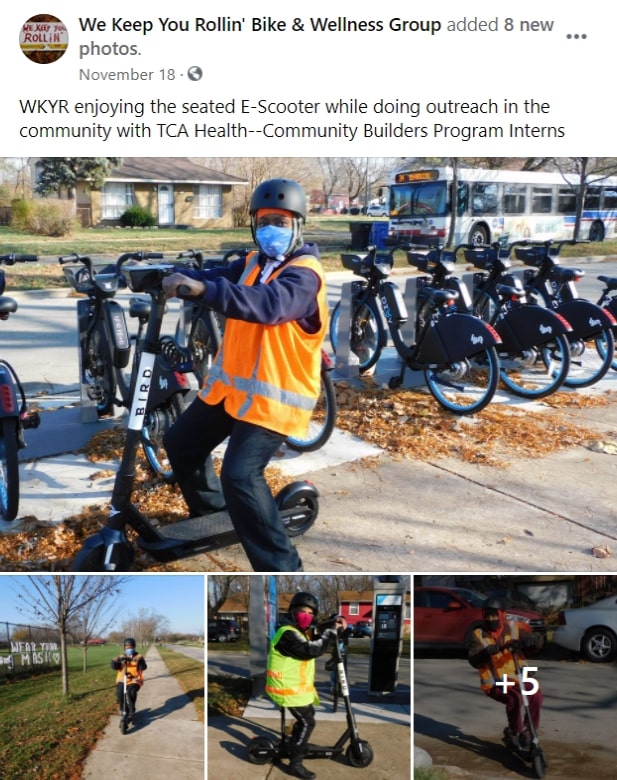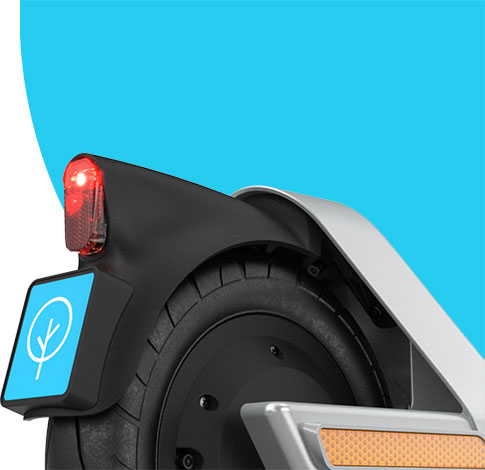The initial headlines detailing the results of Chicago’s 2020 e-scooter program tended to overlook the bigger story.
It’s true that this fall’s 640,000 trips didn’t quite reach the level of the 2019 pilot—a drop that can largely be attributed to COVID restrictions and a colder riding season (last year’s pilot ran from Jun-Oct, while this year’s ran from Aug-Dec). What’s more compelling, however, is the significant progress made towards achieving the city’s ambitious mobility equity goals.
One statistic in particular drives this point home:
Bird ridership in Priority Areas located in Chicago’s south and west sides jumped from 12.5% in 2019 to 37.6% in 2020.
The beneficial impact of e-scooters was perhaps most visible in the city’s transit deserts. Just under half of all Bird rides ended at least ½ mile from a rail station, with 20% ending more than a full mile away.
Leveraging Policy & Community to Increase Equity
This increase in mobility equity didn’t happen by chance. Chicago administrators should be praised for their insistence that e-scooters be both affordable and equitably distributed throughout the city. With their guidance, the Bird team was able to ensure that scooters deployed in Priority Areas were available for residents around the clock. Fleet distribution in these neighborhoods varied by less than 0.25% between morning and afternoon, and Bird riders received an automatic 50% discount on rides in Priority Areas.
Community engagement was another key piece of the puzzle. By listening to and partnering with local leaders and advocacy groups, our team was better able to understand and respond to the needs of Chicago’s diverse population.
“We need to educate the community,” said beloved “Bike Lady” and alternate member of the mayor’s bicycle advisory council Deloris Lucas, whose cycling group We Keep You Rollin’ promotes outdoor wellness and bicycle repair in the city’s south side. “We advocated for more resources like bikes and scooters to come to the far south side, but now what’s going to encourage us to ride them? Bird has shown a real commitment to supporting more transportation choices in our community, and we’ve embraced their efforts to work with us on education programs.”
Together with groups like UCAN and We Keep You Rollin’, we were able to organize group rides and eco-tours throughout Chicago’s south and west sides. Bird also piloted our seated adaptive vehicles to ensure that all riders had the opportunity to experience the benefits of micro-EVs.
The Need for Infrastructure in Priority Areas
While the results of Chicago’s 2020 e-scooter program are encouraging, more must be done to ensure equitable and safe ridership in Priority Areas.
“The sad thing that we have to overcome is the biking infrastructure that we don’t have,” said Deloris Lucas. “We don’t have full connecting sidewalks, we don’t have bike lanes and we don’t have protected bike lanes. That’s what would really encourage people to use bikes and scooters more. My community is surrounded by two highway-type streets where cars are moving very fast. It’s a mental thing. Protected bike lanes would allow us to ride safer.”
Using the feedback provided by Ms. Lucas and others, along with Bird’s comprehensive ride data, we have provided the city with a list of 28 corridors that have been identified as most in need of immediate infrastructure improvements.
Learn More
To learn more about the results of e-scooter programs and Bird’s ongoing push for mobility equity in Chicago and in hundreds of cities around the world, subscribe to the Bird Cities Blog.


